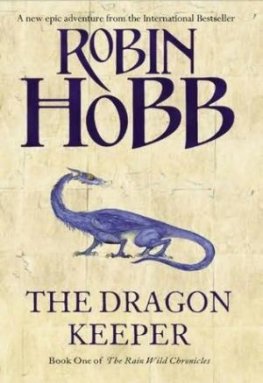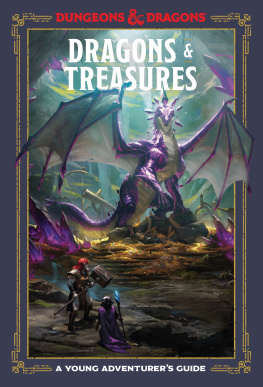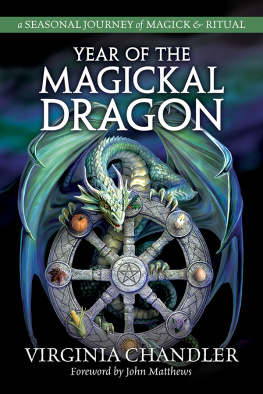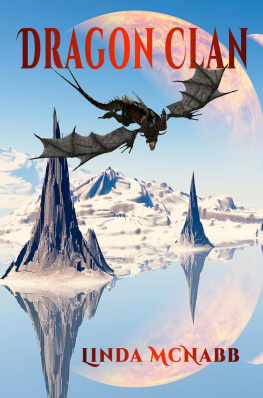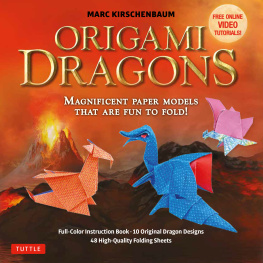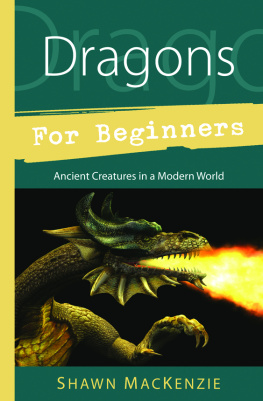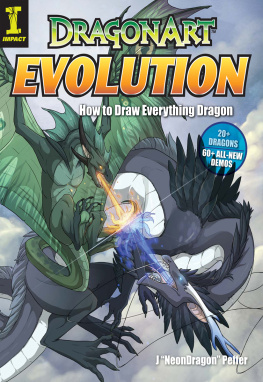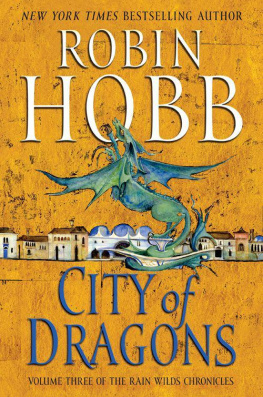About the Author
Shawn MacKenzie had her first Dragon encounter at four years old and has kept them close ever since, warding the daemons of the dark with fire and whimsical tales, reminding her that theres so much more to the universe than most of us see. A graduate of Bennington College, Shawn is a writer of sci-fi/fantasy and an editor of crossword puzzles. Her stories have been published in Southshire Pepper-Pot and the 2010 Skyline Review , and she is a winner of the 2010 Shires Press Award for Short Stories. A Vermont transplant, Shawn is an avid student of myth, religion, philosophy, and animals real, imaginary, large, and small. Visit her at http://mackenziesdragonsnest.com.


Llewellyn Publications
Woodbury, Minnesota
Copyright Information
The Dragon Keepers Handbook: Including the Myth & Mystery, Care & Feeding, Life & Lore of these Fiercely Splendid Creatures 2011 by Shawn MacKenzie.
All rights reserved. No part of this book may be used or reproduced in any matter whatsoever, including Internet usage, without written permission from Llewellyn Publications, except in the form of brief quotations embodied in critical articles and reviews.
As the purchaser of this e-book, you are granted the non-exclusive, non-transferable right to access and read the text of this ebook on screen. The text may not be otherwise reproduced, transmitted, downloaded, or recorded on any other storage device in any form or by any means.
Any unauthorized usage of the text without express written permission of the publisher is a violation of the authors copyright and is illegal and punishable by law.
First e-book edition 2011
E-book ISBN: 9780738730820
Book design by Steffani Sawyer
Book edited by Nicole Edman
Cover art 2011
Background image: iStockphoto.com/Brandy Taylor
Dragon: iStockphoto.com/Alexey Bakhtiozin
Cover design by Kevin R. Brown
Interior artwork 2011 Don Higgins
Llewellyn Publications is an imprint of Llewellyn Worldwide Ltd.
Llewellyn Publications does not participate in, endorse, or have any authority or responsibility concerning private business arrangements between our authors and the public.
Any Internet references contained in this work are current at publication time, but the publisher cannot guarantee that a specific reference will continue or be maintained. Please refer to the publishers website for links to current author websites.
Llewellyn Publications
Llewellyn Worldwide Ltd.
2143 Wooddale Drive
Woodbury, MN 55125
www.llewellyn.com
Manufactured in the United States of America
contents
Dragon Gestalt
Part I: From Tooth to Tail: The Natural History of Dragons
True or False: Dragon Species & Genetic Variations
Where the Wild Weyrs Are: Habitats & Habits
A Year in the Life
Part II: The Long & Winding Road:
Dragons March Through Millennia
Dragon Evolution: Which Came First, the Ouroboros or the Egg?
First Encounters: Cosmic Dragons & the Origin of Our Species
Taming the Chaotic, Suppressing the Wild
Dragon Survival: Acts of God, Acts of Man
Part III: The Care & Feeding of Dragons
Wild Dragons Near & Far
Coddled Eggs and Orphans: Welcoming a Dragon to Your Table
The Early Years
Wellness in a Dragons World
The Turns of Mortal Coil
Standing Alone Together
It is as large as life and twice as natural.
Lewis Carroll, Through the Looking-Glass
introduction

Dragon Gestalt
Thank the gods there are Dragons, or wed surely have to invent them. And what a tall order that would be, to fashion out of whole cloth such fiercely splendid creatures! Such wild guardians and sage counselors, champions of sky, earth, and sea!
Granted, today some people are less familiar with Dragons than others, less at one with the reality of the Dragon, if you will. There are even people who see no relevance for Dragons in modern life and could-not/would-not see them if they were standing square in the warm umbra of a Dragons breath. To these most disbelieving amongst us, I ask: If there are no such things as Dragons, how is it that our disparate, barely erect ancestors, struggling across the still-drifting continents, imagined beings so universally similar in aspect and purpose? How did they manage to keep this myth alive through millennia? And how, even today, does everyoneskeptics includedknow exactly what Dragons look like? Who among us would not recognize a Dragon crossing the boulevard or rabbiting at the country club?
Mere coincidence, some might insist. Stories spun around long-ago dinosaur discoveries. The genetic memory of all that awed our primordial kinserpent, raptor, and ravening felinewrapped into one so seemingly improbable being.
Improbable being the operative word.
When discussing Dragons, we are well served to remember the maxim of Sherlock Holmes: When you have eliminated all which is impossible, then whatever remains, however improbable, must be the truth. In the case of Dragons, it is their very existence which, though improbable to some, remains a truth embraced by millions from pole to pole.
That the undeniable logic of this does not convince everyone is simply the way of the world. There will always be neat, modern people who want neat, modern explanations for the strange and unusual. People who honestly believe Homo sapiens are separate from and even superior to all other creatures. Who pride themselves on their cities and conquests, their strip malls and strip mines. People who put fear before wonder and, in the process, dissolve the ties that hold nature and spirit together. Such attitudes have pushed Dragons to the brink of extinction and necessitated radical conservation efforts around the world. We brought the black-footed ferret back from the abyss; surely we can do the same for Dragons.
To succeed in this endeavor, we must understand these wild and mystical beings from first breath to last, know their habits and habitats, their needs and dangers; what they once were, what they are today; what they want from us and what we need from them. The awe-inspiring and the ordinary, the harrowing and the gentle, the blithe and the heart-rending. We need to know it all.
In short, the sum of all Dragons.
We must remember their history so we can safeguard their future. We must know how to share this world with them to the benefit of all.
With each bit of information we arm ourselves against the non-believerseven win over a few convertsand bring Dragons more intimately into our lives.
It shouldnt be that difficult, right? Since prehistoric times we have lived with Dragons. Weve summoned them from the mists with our longing and banished them twice as quickly with our fear. But what do we all actually know about Dragons?
Dragons are, according to established orthodoxy and a battery of lexicons, largesome might say mountainousscaly creatures with leathern wings, cavernous maws, and incendiary breath. Western legends have them hoarding treasure and adopting a gourmands appreciation for virgins in distress and the errant knights who might hazard their rescue. Simply put, they are monstrous.
As with most appraisals of the mystical, this one is cursory at best, stereotypically prejudiced and erroneous at worst.


